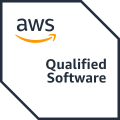TeamForm Shared language series
- The Essential Field Guide
- Organisation and team structure
- Strategy and outcomes
- Work and right sizing
- Connecting it all together
This is the final article in our Shared Language series. I hope you've found it insightful and useful for sparking conversations within your team about rewiring your tooling, data and language. We've covered team structures, strategy, outcomes, and work. Now, let's explore how to make these elements stick.
If your organisation, systems, data, and people are not interconnected, are you truly operating effectively, or are you at risk of straying off course? Are you heading to Paris, Texas, or Paris, France? This analogy from our strategy article highlights the importance of precise alignment.
Why this Matters
You might wonder if this is just theoretical jargon. How can these concepts benefit your organisation? It's a fair question, and one I aim to answer in this article. A well-crafted strategy is only part of the equation. It must be understood and actionable across the organisation. If your tools force you to repeatedly explain that a project in Tool A is the same as a program in Tool B or a team in Tool C, it will confuse users and hinder data analysis for insights.
Finding purpose: A Parable
Consider the story of Christopher Wren, the architect tasked with rebuilding St. Paul’s Cathedral after the Great Fire of 1666. When he asked three bricklayers what they were doing, their responses varied greatly:
- The first said, “I am a bricklayer, working hard to feed my family.”
- The second replied, “I am a builder, constructing the walls of a church.”
- The third answered, “I am a cathedral builder, contributing to a grand vision.”
Their tasks were identical, but their perspectives were vastly different.
Aligning on understanding, language, and terminology is crucial. It enables teams to grasp context and understand how their contributions align with the organisation’s strategy and goals. This clarity fosters alignment and amplifies the impact of a good strategy.
Making it stick
Establishing shared language is a significant first step, however your organisation wont see a benefit until it is visible in tool, data (reporting and analytics) and process. We explore some options below to get you started on the journey of wiring your tooling and data.
How tooling can help?
Tools can either help or hinder. Effective tools should:
- Automated integration → creates trust in data and reduces the desire to reconcile.
- Model work structures in addition to reporting lines → shows where people are coming from and where they are working.
- Provide a clear view of team compositions → transparency empowers teams to self-manage.
- Make it easy to find what you are looking for → reducing friction to find the relevant team reduces effort in finding who to speak to.
- Nudge users towards correct usage and data structuring → making its easy to do the write thing benefits everyone rather than having centralise admin effort.
Implementation Principles
- Perfection v.s. Progress: Focus on changes that provide the most value with the least effort.
- Bludgeon v.s. Nudge: Small changes are easier for users to adjust to.
- Think Big, Start Small: Start with high-value, low-effort changes and expand from there.
- Communication: Effective communication is essential for implementing changes.
Implementation
- Visualise Your Tool Ecosystem: Identify which tools handle specific data and which integrations are in place.
- Collaborate for Validation: Work with colleagues to validate assumptions and create an accurate ecosystem map.
- Determine Missing Data: Identify missing data and potential integrations to visualise the complete "golden thread" from strategy to execution.
- Bring your data to life: As you build up the wiring, visualising the enriched data sets in a reporting and analytical view can help you identify opportunities for future wiring.
.jpeg)
Need Help?
Once you are ready to embark on this journey or collaborate on a template, we’d love to hear from you!
Additional resources
















